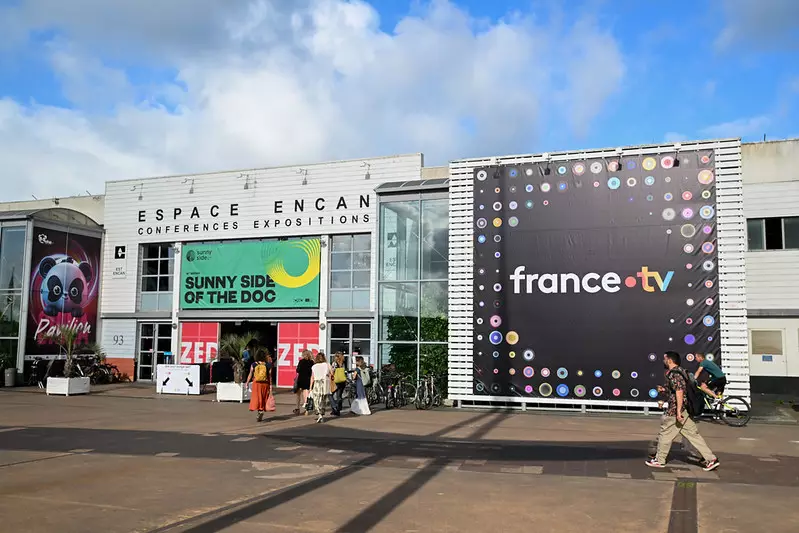Each year, media festivals flood our calendars with promises of innovation, networking, and accolades, but few manage to truly carve a space that transcends mere ceremonial formality. The 36th edition of Sunny Side of the Doc, held in the quaint fishing town of La Rochelle, stands apart not just for its scale but for its unapologetic embrace of the documentary medium as a global force for storytelling innovation. Far from a perfunctory trudge through pitches and screenings, this event demonstrated a nuanced understanding of the political, cultural, and funding currents shaping today’s documentary ecosystem.
The number of participants—2,100 from 60 countries—is impressive on paper, but what truly distinguishes Sunny Side of the Doc is how it leverages this diversity to challenge entrenched, often Western-centric narratives. With delegations hailing from Africa, China, Brazil, Canada, and Spain, the event mirrors the growing democratization of media production and consumption. Rather than acting as a silo for established players, Sunny Side functions as a crucible for cross-border collaboration—transcending national boundaries to unearth stories that refuse to be marginalized or simplified.
Documentaries as Vessels of Truth and Innovation
What struck me most about this festival was its attentiveness to the medium’s evolving role amidst increasing global polarization and economic precarity in the arts. Aurélie Reman’s remarks about confronting “funding challenges” and “reimagining storytelling and collaboration” resonate deeply in an era where documentaries are not just artistic pursuits but vital interventions in public discourse.
The awarded pitches collectively underscore this dual role. Titles like *Leonard Cohen: Behind the Iron Curtain* and *In Front of Us* personify documentaries’ capacity to interrogate history’s shadowed corridors and illuminate pressing geopolitical realities, respectively. At the same time, environmental efforts, exemplified by *Kingdom of the Crocodile*, showcase how film can galvanize urgent ecological awareness in ways that go beyond data and rhetoric.
These winning works exemplify an important shift in documentary production: a move away from passive observation toward active engagement and impact campaigns, a development I believe is crucial as audiences grow wary of superficial media. However, I question whether an event as packed with prizes risks turning creative vision into a competition for approval that could homogenize narrative styles. While awards spotlight achievement, they can also impose restrictive expectations on what stories are deemed “worthy.”
Funding and Global Collaboration: Double-Edged Swords
The festival’s attainment, especially its acknowledgment of diverse funding struggles, paints a complex picture. On one hand, platforms like Sunny Side provide much-needed visibility and financial pathways to creators from underrepresented regions, such as India (*Taalim*) and Ecuador (*Mama*). On the other hand, the reliance on international co-productions poses risks of diluting cultural specificity to meet broader market demands.
Moreover, the focus on partnerships with broadcasters, streamers, and distributors highlights the increasingly commercial dimension of documentary making. Streaming giants’ participation can democratize access but may also skew creative decisions towards algorithms and global appeal, potentially undermining the political urgency and authenticity that independent documentary filmmaking has historically upheld.
Redefining the Documentary Festival Model
I appreciate Sunny Side’s attempt to “move beyond traditional networking,” yet I remain skeptical about how much genuine innovation is possible within the event’s compact four-day framework. Could such an intense but brief encounter truly nurture enduring collaborations rather than transient alliances? The industry’s penchant for fast-paced deal-making often clashes with the slow, deliberate storytelling documentaries require. This tension is pivotal, and Sunny Side’s successful navigation of it could set an inspiring precedent—or reveal the limits of festival diplomacy.
Inclusion of a student choice award (*The Other Gaza*) alongside industry awards reveals a commendable openness to new voices and unsettled narratives, serving as a reminder that the vitality of the medium depends on making space for emerging talent and stories that disturb comfort zones.
Ultimately, Sunny Side of the Doc represents a vital, if imperfect, response to contemporary challenges facing documentary storytelling. Its celebration of diverse stories and embrace of collaboration underscore a hopeful trajectory for the medium, but it must remain vigilant against commercialization and superficial inclusivity masking deeper systemic inequities.

